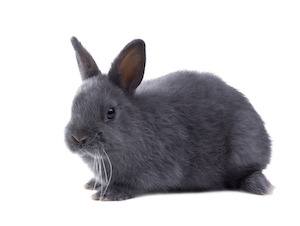When you see the cute, fluffy furball that is a Netherland Dwarf rabbit, it’s hard to imagine these are anything but angels. But the Adam and Eve of this breed were tough, aggressive balls of anger.
Selective breeding has made it possible to tone down this gene as much as possible, so nowadays Netherland rabbits are gentler, easy to train, and friendly.
Netherland Dwarfs make good pets because they act just like a dog. They’re extremely lively and have a lot of energy, but they will also require much of your time and a lot of space to play and explore.
With a life expectancy of 7-10 years, Netherland Rabbits will keep you in good company for years. And, if you take good care of them, they might live years longer!
Temperament & Personality
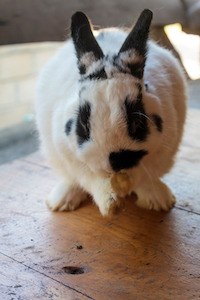
The Netherland Dwarf rabbits are small bunnies with huge personalities. They are love balls you will adore because they’re extroverted and playful.
The Netherland is spirited and unique in the rabbit world. Some people complain that Netherland rabbits can get a little too aggressive or morose, but it usually happens that people don’t understand their true selves.
Regarding this skittish and elusive temperament, many people love Netherland rabbits because they are spunky.
Although they’re small, they’re so playful that you’d better buy yours a huge cage with plenty of activities. That’s because the Netherland bunnies are extremely energetic and playful, even more so than larger breeds.
If you’re put down by the prospect of getting the rabbit equivalent of Grumpy Cat, don’t be. Selective breeding has done its job, and so many breeders wanted to create Netherland bunnies that focus on the bright side of things.
Today’s Netherland is mostly friendly, inquisitive, and easy to train. You can potty-train them quickly, and they will enjoy playing with you. Have a little patience, though, before your rabbit allows you to hold it.
You should also look at the bright side of things. If your rabbit is feisty and selective, that’s just something that makes it unique and fun.
Breed History Facts
Now that you know all these details about the Netherland Dwarfs, here are some history tidbits so you can understand them better.
US Popularity
This breed of bunnies has become popular in the US in the 1960s after their first appearance in the Netherlands.
European Roots
These sweet bunnies have their roots in Germany and Poland. Their forefathers are the Hermelins, who have been bred in Germany from the Polish rabbits. Afterward, the Netherlanddwarfs were bred from the Hermelins in the Netherlands.
Almost a Century of Existence
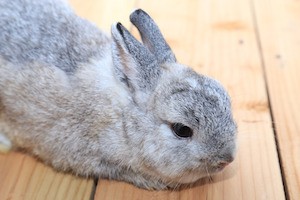
Their personal Frankenstein is a man called Jan Meyering. He and his associates spent a lot of time working to develop this breed at the beginning of the 20th century, and so 1940 saw them recognized as a distinct breed.
They Already Had Their Apocalypse
The Netherland bunnies could have gone extinct because of World War II. Only 17 Netherlandrabbits survived the war, and now all Netherland dwarfs come from those 17 survivors who found a safe haven in England and began multiplying.
Loved since 1950
The British Rabbit Council attested this particular breed in 1950. After that, Netherland Rabbits began to be exported throughout the world, and every country falls in love with them because they are so small, cute, and babyish.
Particularities
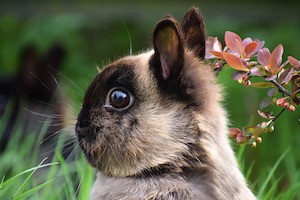
How do you recognize the Netherland Dwarf Rabbits? Here is how you check if your bunny is the real-deal Netherland cutie.
• Lifespan: 7-10 years
• Size & weight: extremely small; their average weight is 2 pounds (1-3.5 pounds)
• Head: large
• Face: round and short
• Neck: short
• Profile: curved
• Coat: short and soft
• Eyes: large
• Ears: small (under 5 cm); erect; round tips
• Body: compact
• Colors: 25 recognized color varieties
• Overall look: babyish
Netherland Bunnies are dwarfs, so it’s not a surprise they are small and weigh so little. It’s also no wonder they look like their forefathers, the Polish rabbits.
Netherland Rabbits look like babies, and their huge heads and eyes supported by short necks on compact bodies are probably the reason why.
Another babyish feature is the round and short faces. Their ears are probably the cutest characteristic because they are very small, under 5 cm, and sit erect on top of their heads.
With a curved profile and a short and soft fur, it’s no wonder that the Netherland Dwarfs make people fall in love with them.
Colors
Don’t rely solely on color as a tale-tell sign to figure out if you have a Netherland Dwarf. There are twenty-five recognized colors for these bunnies, including:
• Black
• Blue
• Blue-eyed white
• Broken
• Chestnut
• Chinchilla
• Chocolate
• Fawn
• Himalayan
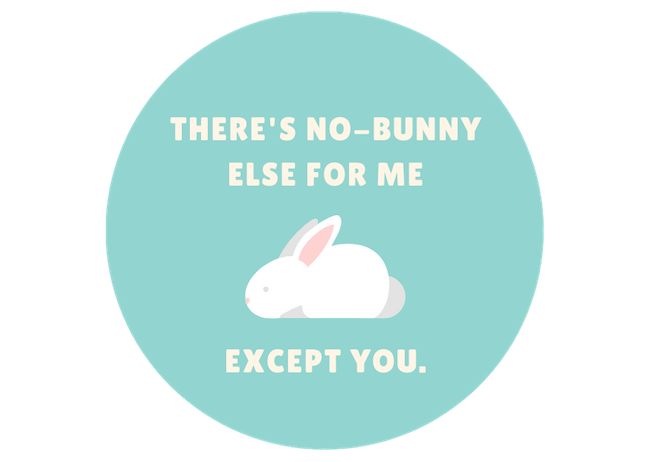
• Lilac
• Lynx
• Opal
• Orange
• Otter
• Ruby-eyed white
• Sable marten
• Sable point
• Siamese sable
• Silver marten
• Smoke pearl
• Smoke pearl marten
• Squirrel
• Steel
• Tan
• Tortoiseshell
Although the colors above are all recognized for the Netherland breed, these bunnies can come in other colors which are non-show-quality.
Top tip: If you want a Netherland rabbit for a show, don’t adopt one with patterns because it will be disqualified.
What happens if you cross a Netherland Dwarf with another breed?
The resulting bunnies will have most of the Netherland rabbits’ characteristics, but the result also depends on the other breed you’re pairing them with.
On the downside, chances are you won’t get a similar infantile look as authentic NetherlandDwarfs, and they won’t be as small either.
The Netherland Dwarfs Babies
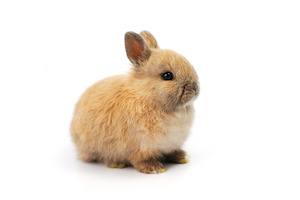
If adult Netherland looks so babyish, imagine how cute a Netherland baby must be!
However, not all Netherland dwarfs babies are lucky.
If you breed two authentic dwarfs, only 50% of them will boast the same Dwarf characteristics as their parents and live to bring glory to their breed in a show.
25% of baby Netherland are false positives aka BUDs (big ugly doe) in breeders’ circles. Although these BUDs are bigger and have longer features than the true Netherland, they still carry the same genetic material so that they can be used for breeding purposes. On the other hand, breeders don’t keep the big ugly bucks.
And sadly, the remaining 25% of Netherland kits will die at births. Also known as Peanuts, these kits can live up to three weeks tops because of underdeveloped digestive tracts. The Peanuts who do survive remain handicapped, so most breeders euthanize them.
Care & Health
Netherland rabbits may be small, but they require the same amount of care as a bigger breed. Besides, seeing as they’re a breed of Dwarfs, they’re more prone to the common rabbit illnesses, so you need to invest more time into caring for them.
Housing
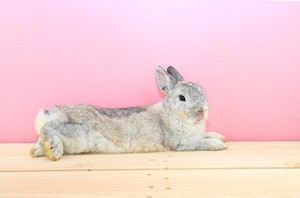
Housing is an essential factor that separates proper from improper care. The size of your cage, where you place it, and how often you clean it are all important things to consider if you want to increase the lifespan of your little Netherland bunny.
Size: Netherland Dwarfs are among the smallest certified breeds, but they’re extremely energetic, and so they need a place to consume this energy. Some sources recommend cages with a base area of 1.5 x 2 feet and a height of 1.2 feet, while others prefer the cages for their Netherland Dwarfs to be twice as big.
Maintenance: Cage maintenance is also important. Netherland Dwarfs can be placed in cages with either a wiry or solid bottom but, if you go with the second option, you should potty-train your bunny to make sure his cage is kept clean. Make sure you get rid of their poo and other stains immediately and do general cleaning weekly.
Bedding: Netherland rabbits prefer beddings made from straw, aspen shavings, or hay. Pine and cedar shavings aren’t safe for these rabbits, who can get intoxicated from the smell.
Food and water containers: The cage of your Netherland rabbit should have a feeder and a waterer. Choose a food container that can be set up on the cage wall, so your bunny doesn’t spill its food on the bedding. Follow the same principle when choosing a water container, and opt for a water bottle instead of an open crock.
Location: The first rule of thumb when setting up the cage for your Netherland rabbit is to make sure it’s safe from drafts. Netherland Rabbits shouldn’t be kept outside unless your country is the epitome of temperate weather with no big temperature fluctuations, high winds, or cold rains. In case you need to keep the cage outside for a bit, make sure the rabbit is safe from the elements and that it can dig a burrow in the bedding for extra warmth.
Another thing to consider is to protect the rabbit from direct sunlight. Netherland Dwarfs are prone to heatstroke and they need shade.
If you need to keep your little one outside in scorching weather, place the cage in the shade and put a bag of ice inside it to cool the temperature a bit. Make sure you change the ice bag frequently.
Food and Diet
It’s also important to offer your Netherland Dwarf quality food if you want your bunny to thrive and to live as long as possible.
The Rabbit Producers Association advises you to give your Netherland rabbit:• 1/8 cup of pellets per pound of body weight• An all-you-can-eat buffet of timothy hay and water• Fresh veggies in small amounts
However, these indications are just a rule of thumb. If your bunny is overweight, you should limit the amount of pellets you serve him or her. Conversely, if you have an underweight bunny, you can slightly increase the amounts of pellets, according to your vet’s advice.
Grooming

Every rabbit needs grooming, but, luckily, your Netherland Dwarf doesn’t need as much as other breeds because they have short coats and they’re really good at cleaning themselves.
Your biggest contribution to grooming will be during their shedding period. Remove the excess fur with a soft brush and follow the natural hair growth direction when combing them.
Use this time to check your rabbit’s coat for ticks or other parasites.
Another important grooming habit is cutting your rabbit’s nails. You should do this every couple of weeks, depending on how fast your bunny’s nails grow. You can take your bunny to the vet for the first few times, and then it’s safe to use a cat claw trimmer.
Quality time
There’s more to caring for your pet rabbit than cage, grooming, and food. Your Netherland bunny needs a lot of love and time to play together.
Besides, this quality time you spend with your pet will help you get to know him or her better, so you can spot potential health issues from their early stages. And if we’ve reached that topic, let’s see some:
Common Health Problems
Your Netherland Dwarf can develop dental issues like malocclusion because it’s a small rabbit with a round face. Look for symptoms like drooling, not eating, or constantly dropping food from its mouth.
These Netherland Dwarfs have a tiny lung space, like all rabbits. Add to that the fact that their upper teeth rest near their sinuses, and you get a recipe for disaster as your rabbit’s dental issues can get their sinuses inflamed, which leads to a lot of respiratory issues.
Netherland dwarfs are also prone to eye problems, especially if they have red or blue eyes, as well as reproductive cancers, digestive problems, and parasites.
Vet Care
Here’s what the vet care for your Netherland Bunny looks like:• Regular vet care to spot problems• Non-mandatory vaccination against viral hemorrhagic disease at 12-14 weeks• Non-mandatory vaccination against myxomatosis at six weeks old and yearly afterwards• Parasite control• Worming• Dental care/ teeth trimming in case your bunny has malocclusion
In Conclusion – Should You Get a Netherland Dwarf Rabbit?
The Netherland Dwarfs look cute, and they have a great lifespan compared to other breeds. They’re playful and energetic, but they also require a lot of time and care on your part.
You might also be put down because Netherland rabbits are a bit skeptical and reserved at first, so they won’t readily accept to be picked up and cuddled.
If you have children, chances are they’ll love a Netherland Dwarf bunny. However, these rabbits are not about love at first sight. They are also easy to scare and have frail bones, which is why they don’t appreciate a loud environment with a lot of rough-housing.
Stress can cause their digestive systems to shut down, so you should also avoid keeping them in the same room with your cats or dogs.
Other than that, Netherland bunnies are the perfect companion for people who appreciate a spunky pet with a cute face and a huge personality.

